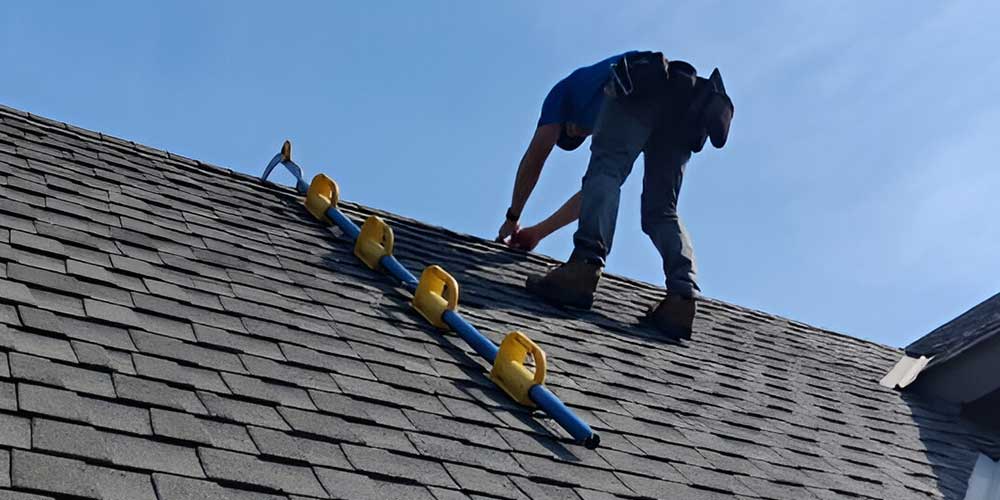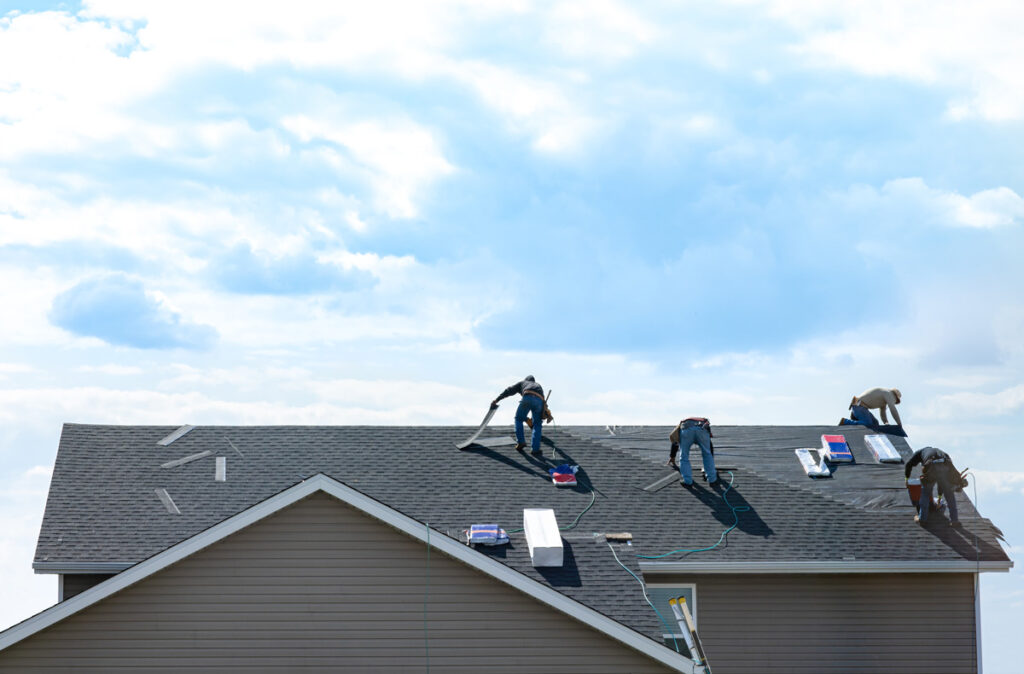Roofers Oahu: Skilled Professionals for Roof Installations and Repair Works
Roofers Oahu: Skilled Professionals for Roof Installations and Repair Works
Blog Article
Understanding the Various Kinds of Roofs: A Comprehensive Overview for Homeowners
With a selection of choices-- varying from the conventional gable to the modern flat-- each kind offers unique advantages and obstacles that ought to line up with the property owner's environmental factors to consider and particular demands. As we check out the complexities of numerous roofing types, it comes to be evident that one dimension does not fit all; the appropriate choice might stun you.
Saddleback Roof
Saddleback roofs, defined by their triangular shape, are among the most preferred roof covering designs as a result of their simpleness and efficiency in losing water and snow. This design features 2 sloping sides that meet at a ridge, enabling efficient drainage and decreasing the threat of water buildup. The steep pitch typically connected with gable roofing systems boosts their capacity to deal with heavy rainfall, making them ideal for different climates.
Along with their sensible benefits, saddleback roofs provide aesthetic versatility. They can be adjusted to different architectural designs, from typical to modern homes. The layout can additionally fit extra functions such as dormer windows, which boost natural light and ventilation in the attic room room.
Furthermore, saddleback roofs provide adequate room for insulation, contributing to energy effectiveness. Property owners can pick from a selection of roofing materials, including asphalt tiles, metal, and tiles, even more improving personalization alternatives.
Despite their benefits, saddleback roofs may require added assistance in locations susceptible to high winds or heavy snowfall. Overall, the gable roofing stays a popular choice due to its blend of functionality, toughness, and visual charm.
Apartment Roofs
Flat roof coverings are usually identified for their minimalist layout and functional applications, especially in commercial and industrial settings (oahu roofing). These roof coverings include a virtually horizontal or straight surface area, which permits simple building and construction and functional space utilization. While they may do not have the aesthetic allure of angled roofs, flat roofs provide many advantages, especially in urban atmospheres where making the most of area is important
Among the main advantages of flat roofs is their accessibility. Home owners can utilize the roof covering room for numerous purposes, such as rooftop yards, terraces, or photovoltaic panel installations. Additionally, flat roofing systems are commonly more economical to keep and set up contrasted to their sloped equivalents, as they require fewer materials and labor.
Nevertheless, flat roofings do present particular difficulties. Correct drainage is necessary to stop water merging, which can result in leakages and structural damages. Thus, selecting top quality waterproofing products and regular assessments are important for ensuring longevity. Usual products utilized for level roofs include built-up roof covering (BUR), modified asphalt, and single-ply membrane layers, each offering distinctive advantages. On the whole, level roofing systems offer as a useful and versatile choice for many house owners and companies alike.
Hip Roofings
Hip roofing systems are identified by their sloped sides that converge at the top, developing a ridge. This style is distinctive from saddleback roofs, as all 4 sides of a hip roofing system incline downwards toward the walls, offering a more steady framework. The angle of the slopes can vary, enabling versatility in architectural aesthetics and performance.
Among the primary advantages of hip roofings is their ability to withstand heavy winds and unfavorable weather condition problems. The sloped surface areas make it possible for much better water drain, minimizing the threat of leakages and water damages. In addition, hip roofing systems use enhanced attic room area, which can be used for storage or even exchanged comfortable locations.
Nonetheless, building a hip roof can be much more complex and expensive than easier roofing system types, such as gable roof coverings. The additional material and labor associated with developing the slopes and making sure proper structural honesty can bring about higher costs. Regardless of these drawbacks, several home owners favor hip roofs for their longevity, visual appeal, and capacity for energy effectiveness.
Mansard Roof Coverings
Mansard roofings, typically recognized by their special four-sided layout, feature two inclines on each side, with the lower slope being steeper than the upper. This building design, originating from France in the 17th century, is not only visually appealing yet useful, as it takes full advantage of the functional space in the upper floors of a building. The high lower incline enables more clearance, making it a perfect choice for lofts or attic rooms, which can be exchanged living rooms.
Mansard roofs are characterized by their versatility, accommodating numerous building designs, from typical to modern. They can be built with various products, including asphalt roof shingles, slate, or steel, supplying property owners with a variety of options to suit their budget plans and preferences. In addition, the style enables the assimilation of dormer windows, boosting natural light and ventilation in the upper levels.
However, it is important to consider the possible drawbacks. Mansard roofs may call for even more maintenance as a result of the intricacy published here of their layout, and their steep inclines can be challenging for snow and rain runoff. On the whole, mansard roofings incorporate sophistication with practicality, making them a prominent selection amongst house owners seeking distinct building attributes.
Lost Roofing Systems
As property owners progressively look for simpleness and performance in their building styles, shed roofing systems have emerged as a preferred selection. Defined by a solitary sloping aircraft, a shed roof provides a minimalist aesthetic that enhances various home designs, from modern to rustic.
One of the key advantages of a shed roofing system is its uncomplicated construction, which typically translates to reduce labor and material prices. This style enables efficient water drain, lowering the threat of leakages and water damage. Additionally, the upright incline supplies adequate space for skylights, enhancing natural light within the interior.
Lost roof coverings likewise supply convenience in terms of usage. They can be properly integrated into enhancements, garages, or outdoor frameworks like sheds and pavilions. Moreover, this roofing system style can fit various roof covering products, including metal, asphalt tiles, or perhaps eco-friendly roofings, aligning with eco-friendly initiatives.
Nevertheless, it is important to think about local climate problems, as heavy snow lots might require changes to the roofing's angle or framework. Overall, dropped roofs offer a practical and cosmetically pleasing choice for home owners looking to take full advantage of capability without compromising style.
Conclusion


Gable roofs, defined by their triangular shape, are among the most preferred roof covering designs due to their simplicity and performance in losing water and snow. oahu roofing. The steep pitch typically linked with gable roofings improves their ability to handle hefty precipitation, making them appropriate for numerous climates
While they may lack the visual appeal of pitched roof coverings, level roofings offer numerous advantages, specifically in metropolitan environments where making best use of area is important.

Report this page